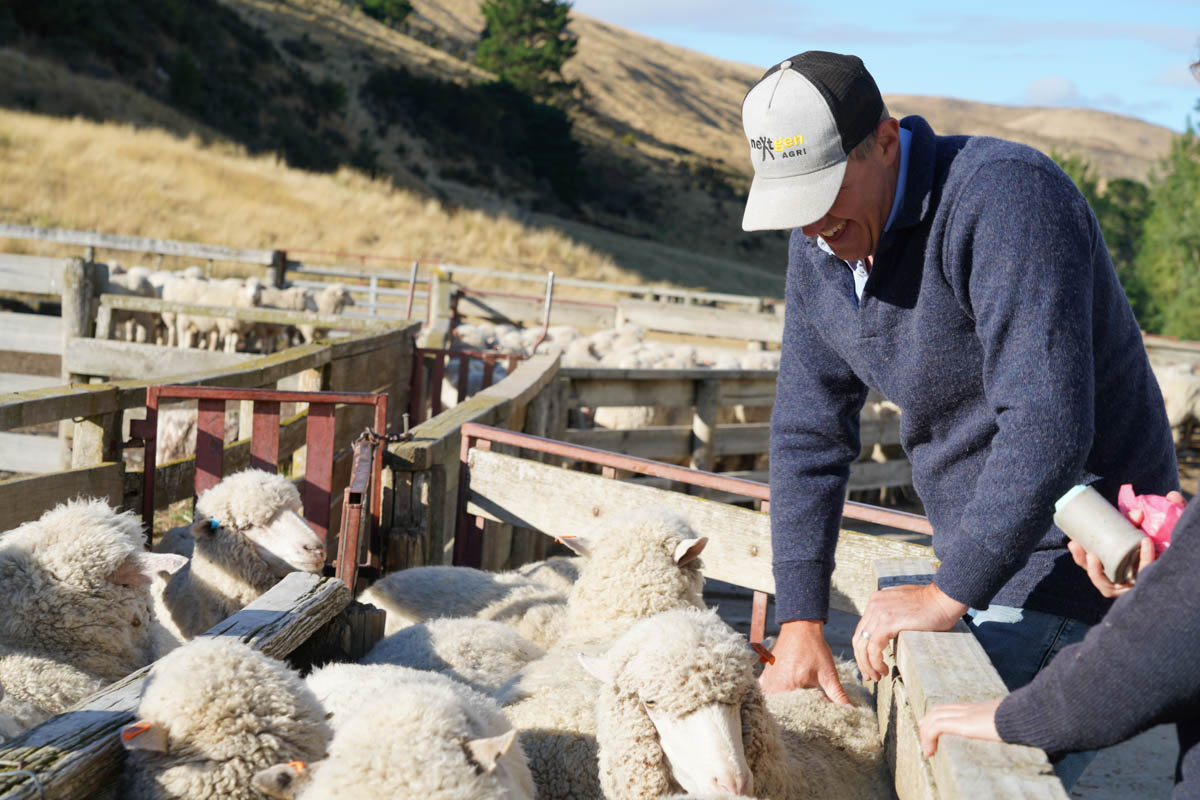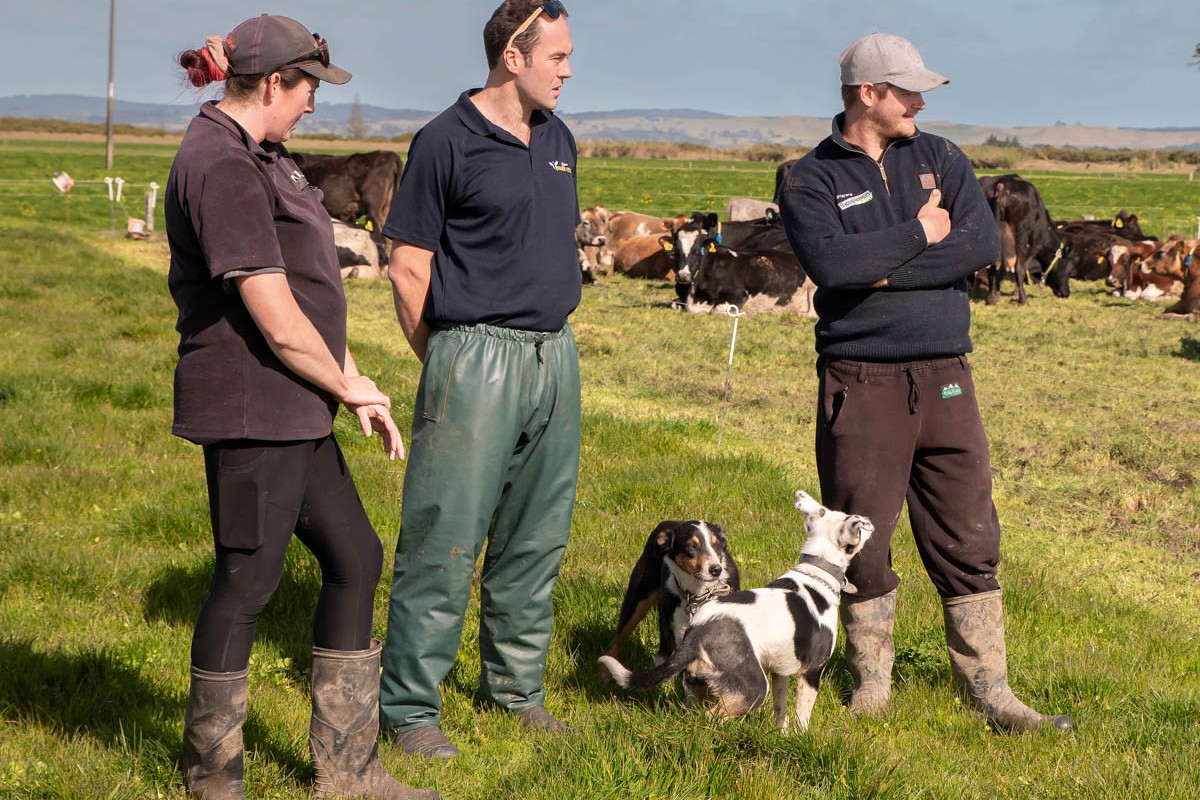Beef farmers are missing out on the benefits of short-gestation bulls, Canterbury breeder Yvonne Lee says. Lynda Gray reports.
Short-gestation bulls are a missed opportunity for commercial beef farmers, Yvonne Lee says.
Some might say that’s a predictable statement from a breeder of short-gestation Hereford bulls, most of which go to dairy farmers, but earlier and easier calving of lower birthweight calves can be used to productive effect in a commercial beef herd, she says.
Mating them to second-calving heifers, which can take 10 to 20 days longer than average to cycle after their first calving, is one use. The cows mated to bulls, selectively bred to shorten gestation length up to 10 days, will produce a calf two to six days earlier than the norm and after a couple of matings will be in sync with the rest of the breeding herd.
“It’s a way of avoiding a dry cow and potentially culling out good genetics from a herd,” Yvonne says.
The bulls could also add value to a weaner breeding system, with the earlier-born calves having longer to gain weight and the dam longer to regain condition before mating, therefore increasing the likelihood of conception.
‘Dairying was on the rise and we could see a shorter gestation was a point of difference with the benefits of having a cow that’s back milking sooner and a saleable white-faced calf.’
“Genetically over time there’s the potential to pull back the calving date of a cow herd and it can be done without compromising on growth and carcase traits. It’s not and ‘and/or’ proposition it’s a plus.”
Yvonne suspects the slow uptake by beef breeders is the misconception that short-gestation bulls are bred purely for the dairying requirement of earlier and easier calving so that the cow has more days in milk.
“But we also breed for growth and carcase traits which we believe are very important given the high percentage of beef processed in New Zealand is born on a dairy farm.”
According to Beef + Lamb NZ Genetics research as part of a four-year Dairy Beef Progeny Test 69% of the estimated 2.45 million cattle processed in 2016/17 were dairy or dairy-beef based genetics.
Yvonne will sell about 80 yearling bulls this year. Semen is also sold to CRV Ambreed and Worldwide Sires, and last year sexed bull calf semen was sold through ST Genetics.
Yvonne got a liking for Herefords when she moved to Cannington and started a commercial herd and share farming cattle. Her neighbours John and Liz McKerchar, of Shrimpton’s Hill Herefords, were positive influencers.
The chance for Yvonne to take her red-and-white passion a step further came in 2007 when she bought 50 breeding cows at the dispersal sale of the Leader Stud in North Canterbury. Some of the foundation cows had been part of Hereford Association research aimed at breeding for short-gestation bulls, which gave Yvonne a genetic head start when the decision was made to pursue this trait in her newly established Bluestone Stud.
“At that point we decided to produce bulls for the dairy sector. Dairying was on the rise and we could see a shorter gestation was a point of difference with the benefits of having a cow that’s back milking sooner and a saleable white-faced calf.”
The stud herd comprises 200 breeding cows and will increase to 350 over the next few years.
From thin blue line to Bluestone
Yvonne is not your typical Hereford stud breeder. Before farming and kids she was a police officer in Invercargill, which is where she met Ben, a solicitor. After marrying the couple made the decision to go farming in 1996, so that their kids would have a rural upbringing.
They chose South Canterbury because Yvonne had family farming connections there, they liked the location and proximity to Christchurch. Their stepping stone into farming was 78 hectares at Cave where Yvonne traded sheep and cattle.
The Lees moved in 2002 to Cannington, half an hour inland from Timaru, taking on 380ha of predominantly hill and tussock country backing on to the Hunter Hills and in the shadow of Mt Nimrod. The farm is well suited for breeding cows but a shortfall of easier country for the growing out of young stock led to the buying in 2017 of Rosedale Grange, a nearby 218ha block.
Although it’s only a five-minute drive between them the home block has 1140mm rainfall due to the shadow effect of Mt Nimrod, compared with 760-890mm on the other. Collectively the blocks provide the total package of rugged summer safe country for cows, and easier paddock terrain for the finishing of young cattle, and the 800-ewe crossbred flock plus trading lambs.
Yvonne runs the farm with help three days a week from son Hamish (23). The Lees’ daughter Gabby (21) is a nurse in Christchurch and also takes a keen interest in the farm. Ben helps out around the demands of his business Agilis which imports and distributes a range of animal health treatments to vets throughout the country.
AI and SGBs
Some commercial Angus farmers are using short-gestation bulls in AI programmes. They’re doing it for a number of reasons.
“Some do so with a particular end market in mind or to improve their female line and breeding herd,” Greg McKay of Xcell breeding services says.
“We’ve got clients who do two rounds of AI, the first is using the bull of their choice, usually for high growth rates and IMF, and the second round with a short-gestation bull to condense calving.”
The pluses of a condensed calving can filter through to feed management.
“If you know that calving is going to occur over a shorter period it can make it easier to plan and manage feeding so there are several benefits that all add up.”




